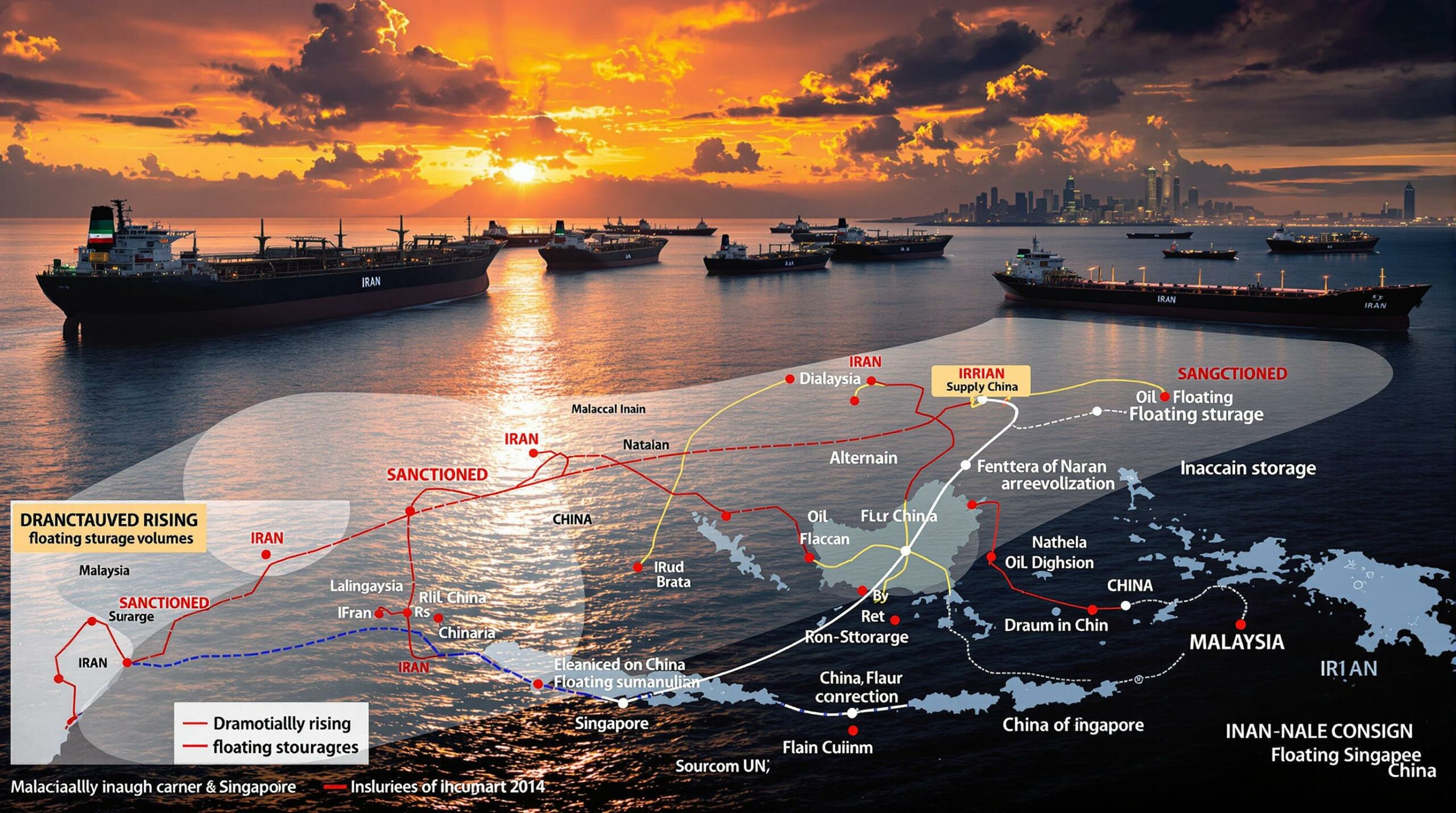Why Has Honda Postponed Its Canadian EV and Battery Plans?
Honda's recent decision to delay its electric vehicle (EV) and battery production plans in Canada represents a significant shift in the global automotive landscape. The Japanese automaker has officially put its ambitious Canadian EV initiatives on ice for approximately two years, reflecting broader challenges affecting the entire electric vehicle industry.
The postponement comes amid financial pressures and market uncertainties that have forced Honda to recalibrate its electrification strategy. With significant implications for Canada's emerging battery-grade lithium refinery ecosystem, this decision highlights the complex interplay between shifting consumer demand, trade policies, and automotive manufacturing economics.
What Led to Honda's Canadian Investment Freeze?
Market Conditions Creating Uncertainty
Honda's decision to postpone its comprehensive EV supply chain project in Canada stems from a confluence of challenging market factors. Most notably, North American EV sales growth has dramatically slowed to just 7% year-over-year in Q1 2025 compared to 15% in 2024, according to data from Cox Automotive.
The company cited this cooling demand as a primary justification for the delay. In an official statement, Ken Chiu from Honda Canada explained: "Due to the recent slowdown of the EV market, Honda Motor has announced an approximate two-year postponement… [and] will continue to evaluate timing as market conditions change."
Financial Implications for Honda
The financial pressures on Honda are substantial and directly influenced the postponement decision. The automaker has forecast a dramatic 59% drop in operating profit for the fiscal year ending March 2026. This projected decline would reduce Honda's operating income to approximately ¥500 billion (€3 billion) from ¥1.21 trillion (€7.4 billion) in the previous fiscal year.
These financial challenges have necessitated a comprehensive reevaluation of capital-intensive projects across Honda's global operations. While the company has indicated it can absorb around ¥200 billion through internal cost-cutting measures, the magnitude of the projected losses demanded more significant action.
Impact of Trade Tensions and Tariffs
Perhaps most critically, mounting global trade tensions have significantly impacted Honda's financial outlook and strategic planning. The company projects a substantial ¥650 billion loss from tariffs, with ¥300 billion specifically attributed to levies on approximately 550,000 imported vehicles.
Trade policies under the current U.S. administration have created additional uncertainty for cross-border automotive supply chains. Industry analysts from S&P Global Mobility noted that "protectionist policies under Trump have forced automakers to reassess North American investments," highlighting how US tariffs impact is reshaping manufacturing strategies.
What Was Honda's Original Canadian EV Strategy?
The Comprehensive Ontario Investment Plan
Honda initially unveiled its Ontario-based EV supply chain project in April 2024, positioning it as a cornerstone of its North American electrification strategy. The announcement came with significant fanfare, as it represented one of the largest automotive investments in Canadian history.
In its April 2024 press release, Honda emphasized that "localizing battery production ensures resilience against global supply disruptions," reflecting growing industry concerns about supply chain vulnerability. The company's strategy aligned with broader industry trends toward developing regional supply capabilities to reduce dependency on distant suppliers.
Planned Manufacturing Infrastructure
The original plan centered on converting Honda's existing factory in Alliston, Ontario, to produce electric vehicles. Additionally, the company planned to construct a new EV battery manufacturing plant at the same facility, with operations scheduled to begin in 2028.
While Honda never officially confirmed the total investment value, industry analysts estimated the project would require approximately $10-11 billion USD. This massive capital commitment would have transformed the Alliston facility into one of North America's most advanced automotive manufacturing centers.
Vertical Integration Components
A key differentiator in Honda's original strategy was its commitment to on-site processing of cathode materials essential for battery manufacturing. This vertical integration approach would have significantly reduced Honda's reliance on the Chinese-dominated battery supply chain, where over 95% of cathode processing currently occurs.
By establishing local cathode processing capabilities, Honda aimed to create a more resilient supply chain while potentially qualifying for additional incentives under North American content requirements. This technical aspect of the plan had strategic significance beyond mere manufacturing efficiency.
How Does This Delay Affect Canada's EV Manufacturing Landscape?
Ontario's Battery Production Ecosystem
Had Honda proceeded with its original timeline, the facility would have become Ontario's third major EV battery plant, following significant investments from other automotive groups. The province has actively positioned itself as a North American battery manufacturing hub.
PowerCo (Volkswagen Group) has already prepared its site in St. Thomas, Ontario, with a pledged investment of $7 billion CAD, though construction has yet to begin. Meanwhile, NextStar Energy, a joint venture between Stellantis and LG Energy Solution, commenced battery module production at its Windsor facility in late 2024, with a planned capacity of 45 GWh per year.
Economic Impact on Regional Development
The postponement creates substantial uncertainty for local economic development plans. According to a statement from the Unifor union, over 2,000 direct manufacturing positions are now on hold, along with thousands more in the supply chain and supporting industries.
Canada's Minister of Innovation acknowledged the setback, noting that "Honda's delay is a setback, but Ontario remains a leader in battery tech." Nevertheless, regional suppliers, workforce development programs, and infrastructure projects may need to adjust their timelines to accommodate this significant delay.
Competitive Positioning in North America
Canada has actively pursued a position as a key player in the North American EV ecosystem, with federal and provincial governments offering substantial incentives through programs like the Zero-Emission Vehicle Infrastructure Program. Honda's decision to pause its Canadian plans may impact this momentum.
The delay raises questions about Canada's competitiveness relative to U.S. and Mexican manufacturing locations. While Canada offers advantages in renewable energy and technical talent, other locations may provide cost advantages that become increasingly important during periods of financial pressure.
What Are the Broader Industry Implications?
Reassessment of EV Transition Timelines
Honda's decision reflects a broader industry trend of manufacturers recalibrating their EV transition timelines. The initial wave of ambitious electrification announcements is giving way to more measured approaches as companies confront market realities.
GM CEO Mary Barra recently acknowledged this shift, stating that "We're balancing EV investments with hybrid demand" during a May 2025 earnings call. Ford has similarly delayed its Kentucky battery plant to 2027, citing permitting challenges and market conditions.
Supply Chain Regionalization Challenges
The automotive industry has been pursuing aggressive supply chain regionalization strategies, but Honda's postponement highlights the complexities of executing these strategies. According to Benchmark Mineral Intelligence, lithium refining capacity in North America remains at less than 5% of global output, creating bottlenecks for battery production.
These material constraints represent a significant hurdle for companies attempting to establish vertically integrated production in North America. The high capital requirements and technical complexity of processes like cathode production have proven more challenging than many manufacturers initially anticipated.
Impact on Battery Material Supply Chains
The delay may influence investment decisions throughout the battery materials supply chain. Companies developing mining, refining, and processing capabilities for critical minerals energy transition must now reconsider demand projections and capacity expansion plans.
This ripple effect could potentially slow the development of North American battery material processing capacity, further complicating the industry's attempts to reduce dependency on Asian suppliers. Startups addressing critical mineral shortages, such as Lilac Solutions with its direct lithium extraction technology, may face additional funding challenges.
How Might Honda's Strategy Evolve?
Potential Adaptation Scenarios
While Honda has announced a two-year postponement, the company indicated it will "continue to evaluate the timing and project progression as market conditions change." This suggests the possibility of either accelerating the timeline if market conditions improve or potentially further delaying the project if challenges persist.
Industry analysts from AutoForecast Solutions suggest that "Honda may pivot to Mexico for cost-efficient EV production" as an alternative to the Canadian investment. This would allow the company to maintain North American manufacturing presence while potentially reducing capital requirements and operational costs.
Alternative Production Approaches
During this pause, Honda appears to be exploring alternative approaches to meeting its North American production needs. According to the company's latest investor presentation, Honda plans to launch four new hybrid vehicles in North America by 2026, suggesting a pivot toward hybrid technology as a transitional strategy.
The company might also investigate more phased implementation strategies for its battery production. McKinsey & Company's 2024 report on battery metals investment highlighted how modular battery plants can reduce upfront costs while allowing for flexible capacity expansion as demand grows.
Hybrid Strategy Considerations
Honda's adjusted approach likely involves a greater emphasis on hybrid vehicles alongside pure EVs. This strategy mirrors Nissan's approach at its Mississippi plant, where the company has scaled EV output using existing infrastructure while maintaining conventional vehicle production.
This balanced portfolio approach could allow Honda to meet emissions regulations while adapting to consumer preferences and infrastructure limitations. The 22% increase in hybrid sales in North America (Q1 2025 vs. Q1 2024) according to Wards Intelligence suggests this may be a financially prudent strategy in the near term.
What Does This Mean for EV Market Development?
Realistic Growth Projections
Honda's decision signals a more cautious approach to EV market growth projections. While long-term electrification trends remain intact, the path appears to be more gradual than many industry forecasts suggested, with adoption curves varying significantly across different markets and vehicle segments.
The infrastructure challenge remains substantial. According to the Department of Energy, the U.S. currently has approximately 180,000 public chargers, far short of the 1.2 million needed by 2030 to support projected EV adoption. This gap continues to influence consumer purchasing decisions and manufacturer investment strategies.
Policy and Incentive Dependencies
The pause highlights how dependent EV market development remains on supportive policy environments and incentive structures. Changes in political leadership and trade policies can significantly impact manufacturer investment decisions and market development trajectories.
The U.S. National Blueprint for Lithium Batteries (2021-2030) outlines ambitious goals for domestic battery production, but implementation has faced challenges as political priorities shift. Honda's decision illustrates how quickly manufacturers can adjust plans in response to policy uncertainties.
Consumer Adoption Considerations
The slowdown in EV demand growth that contributed to Honda's decision reflects ongoing challenges with consumer adoption. A May 2025 Consumer Reports survey found that "48% of buyers cite charging anxiety as a top concern" when considering an electric vehicle purchase.
While technological improvements continue—with 2023 EVs retaining 90% battery capacity after 100,000 miles according to Geotab data—these advances have not yet fully addressed consumer hesitations around range, charging time, and total cost of ownership. Furthermore, recent battery recycling breakthrough technologies may help address some of these concerns in the long term, but they cannot immediately overcome current market hesitations.
FAQ: Honda's Canadian EV Production Delay
When did Honda first announce its Canadian EV production plans?
Honda first announced its plans to build electric vehicles at its existing Alliston factory in Canada in April 2024, with a comprehensive strategy that included battery production and cathode material processing.
What is the new timeline for Honda's Canadian EV project?
Honda has postponed the project for approximately two years, with no specific revised start date announced. The company stated it will continue to evaluate timing based on market conditions.
How much was Honda planning to invest in its Canadian facilities?
While Honda never officially confirmed the figure, industry analysts estimated the investment would total approximately $10-11 billion USD for the complete project, including vehicle production, battery manufacturing, and materials processing.
What financial challenges is Honda currently facing?
Honda has forecast a 59% drop in operating profit for fiscal year 2026, with projected losses of 650 billion yen from tariffs, including 300 billion yen specifically from levies on imported vehicles.
How does this decision affect Canada's EV manufacturing landscape?
The postponement impacts Canada's ambitions to become a key player in the North American EV ecosystem. However, other significant investments from PowerCo and the Stellantis-LGES joint venture NextStar Energy continue to advance in Ontario.
Table: Comparison of Major EV Battery Plants in Ontario
| Company | Location | Status | Investment Value | Production Target |
|---|---|---|---|---|
| Honda | Alliston | Postponed by ~2 years | ~$10-11B USD (est.) | Originally 2028 |
| PowerCo (VW) | St. Thomas | Site prepared, construction pending | $7B CAD | Not specified |
| NextStar (Stellantis-LGES) | Windsor | Module production started late 2024 | $5B CAD | 45 GWh annually |
Ready to Track the Next Major Mineral Discovery?
Keep ahead of market-moving announcements with Discovery Alert's proprietary Discovery IQ model, which instantly analyses ASX announcements to identify significant mineral discoveries before they impact the market. Visit our discoveries page to see how early detection of major finds like De Grey Mining and WA1 Resources could transform your investment returns.




